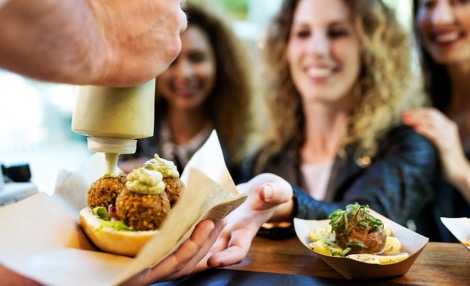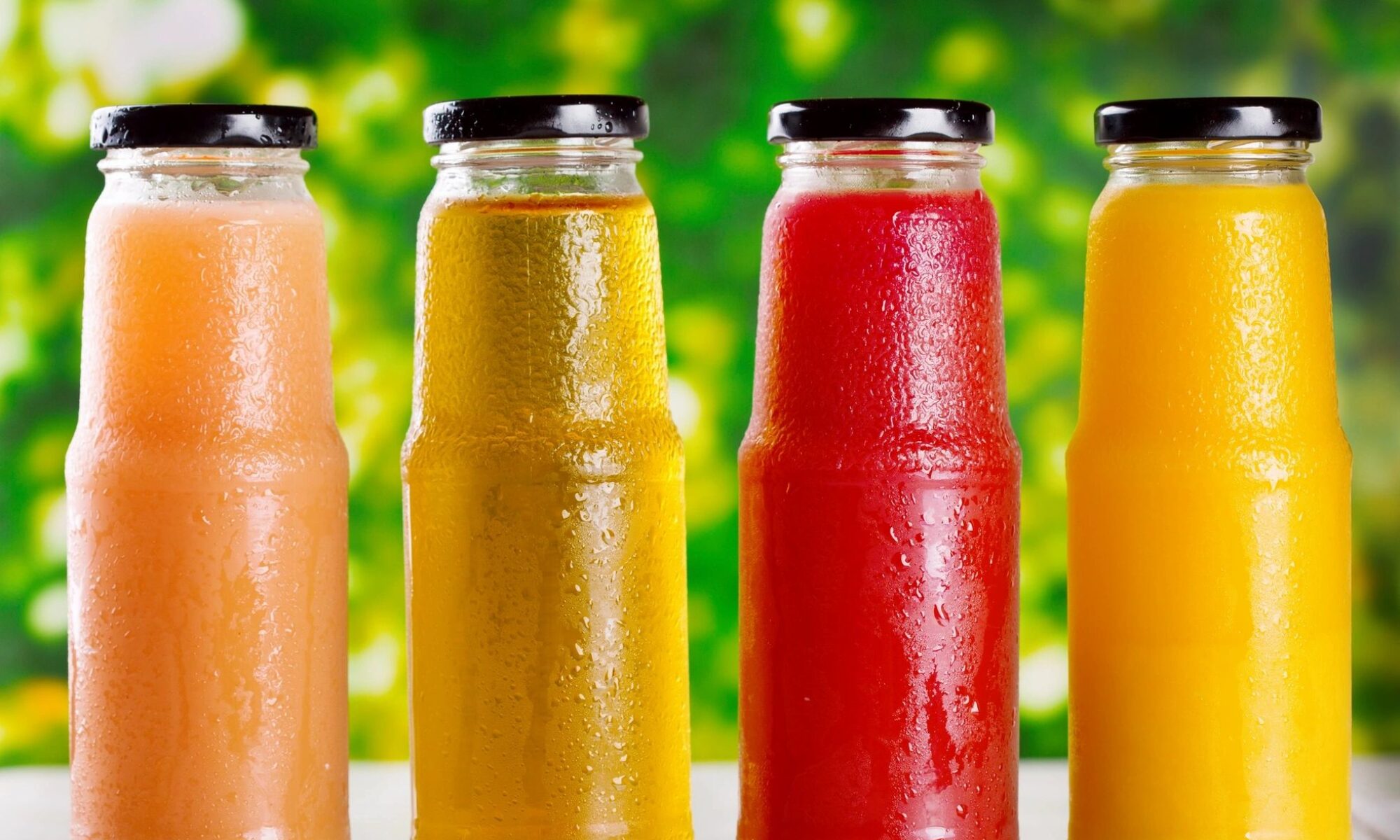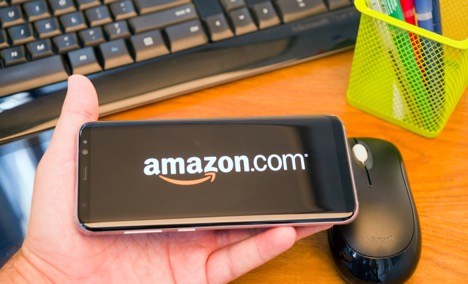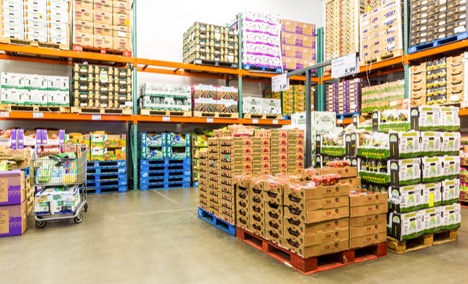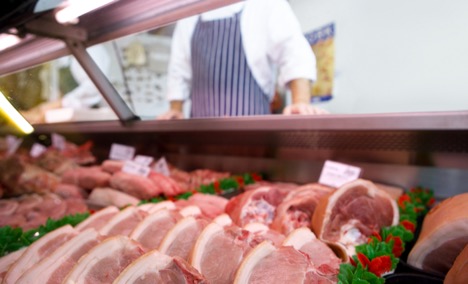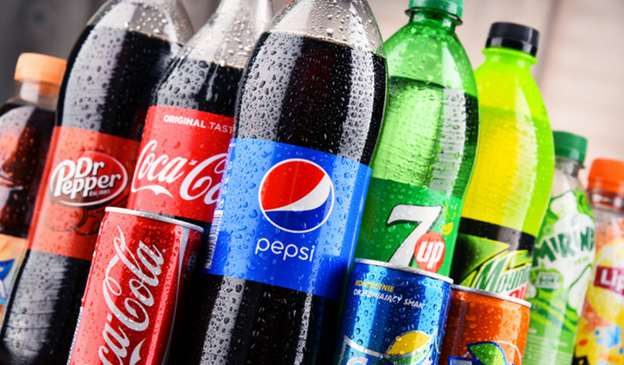What Beverage Insiders Need To Watch Today
Product trending is usually closely related to the consumer’s lifestyle. We are experiencing a global trend where it’s becoming popular to be a workaholic, to go to the gym regularly, to live an organic and vegan lifestyle and to avoid unhealthy products, such as sugar or artificial ingredients. All these trends are affecting the consumption of specific products, thus affecting entire industries.
When it comes to the soft drinks sector, it represents a very dynamic space for growth because consumers continue to grow their quest for experimentation. GlobalData research explores all aspects of innovation and behavior and covers the top trends in the soft drinks sector. The report outlines the key trends that currently impact the core soft drink categories: carbonates, packaged water, sports and energy drinks, RTD tea and coffee, juices and smoothies.
Soft Drink Purchase Drivers
Sensor benefits, trust, and health drive soft drink purchases. The largest purchase driver is product enjoyability. Consumers prefer product enjoyment over all other trends when it comes to soft drinks. Despite health concerns and the latest trends promoting a sugar-free lifestyle, consumers are still interested in tasty, enjoyable soft drinks and perceive them as an indulgent treat.
Trust and familiarity are among the top purchase drivers, in addition to product enjoyment. In the soft drinks market, many consumers continuously stay by their trusted, favored brands.
However, the backlash against sugar is changing the competitive soft drink industry on many levels. Consumers are massively looking to moderate or limit their consumption of sugary beverages and replace them with alternatives perceived and promoted as healthier.
Consumers Want to Experiment, But Not With Everything
Soft drink producers should focus on the consumers’ willingness to experiment with various beverages, particularly with conventional beverages, such as bottled water, coffee or tea. When it comes to functional drinks, like sports drinks and energy drinks, customers tend to stay loyal to their favorite brands and don’t want to experiment with new ones.
In comparison, when it comes to RTD coffee and bottled water, consumers are more than open to trying new products, as there are no particular dominating brands in that department. Producers should look to capitalize on this specific consumer’s behavior by creating drinks with new, unique ingredients and fresh, innovative flavor combinations.
The research highlights the top six trends impacting innovation in soft drinks:
- Authentic indulgence
- Beyond plastic packaging
- Natural energizers
- Ethical soft drinks
- Water hybrids
- Added carbonation
Trend 1 – Authentic Indulgence
Consumers are willing to pay a higher price for a high-quality beverage that offers indulgence and authenticity. The focus of soft drink consumers everywhere is quickly shifting towards high-end, craftsmanship-made, authentic drinks. They are seeking more indulgent and premium soft drinks that represent authenticity and high quality. There is no official definition for “craft” soft drinks, and it is prone to subjectivity. However, GlobalData believes that certain attributes mark beverages as “craft.” These attributes include:
- Appearing as a small-scale producer ( or even a small-scale producer within a larger company)
- Appearing as independent
- A collection of beverages with innovative styles
- Using traditional or artisanal methods and techniques in the production process
- Using locally grown ingredients
On a global scale, consumers identify “craft” with quality, and they associate the term with handmade, high-quality ingredients. People show a high interest in craft soft drinks, and according to the research, 55% of consumers around the globe would like to see more “craft” non-alcoholic beverages.
High-sugar soft drinks are now occasional, indulgent treats
The backlash against sugar that’s been dominating the consumer market is repositioning soft drinks from a habit to occasional, indulgent treats. Consumers are massively concerned about the high levels of sugar in soft drinks, especially when it comes to carbonated beverages and juices. However, despite the concern, consumers still like to indulge in sugary beverages, but they no longer see the products as something they would consume on a daily basis. They now see sugary drinks as an occasional treat.
Producers should focus on enhancing brand authenticity by leveraging brand heritage and history, and also by using home-grown or locally sourced ingredients for their products. The brand’s environmental impact also plays a role in positioning a product as a premium craft.
Consumers across all age groups enjoy craft
The desire for more authentic experiences is growing globally, across all age groups. Interest in craft-style soft drinks extends across all age groups, with the least receptive one being senior consumers (55 years and older) but 55% of them still find craft soft drinks appealing.
Older consumers care for the heritage and nostalgia craft offers, while younger generations value crafts for its authentic, meaningful experience.
Trend 2 – Beyond Plastic Packaging
Consumers value brands move away from plastic packaging towards more sustainable alternatives because they recognize that plastic packaging hurts the environment. The shift from plastic packaging to other options such as aluminum cans or beverage cartons is taking its toll. It is now a well-known fact that plastic bottles are a significant contributor to plastic waste, and governments around the world are actively looking for ways to address the issue. In fact, the UK government is seeking to eradicate all avoidable plastic waste by 2042.
The entire industry will be striving to provide sustainable innovations in packaging alternatives including refillable packaging, recyclables, and alternative materials – as well as material weight reductions to reduce its environmental impact.
While PET plastic bottles widely used in the soft drinks industry are highly recyclable, most of them don’t go into the recycling process – people often dump them in fields where they could take hundreds of years to decompose. Only one-third of consumers globally consider plastic bottles to be somewhat environmentally friendly, and consumers all over the world are fully aware of the harmful plastic bottles impact on our environment.
The attitude-action gap
While a majority of consumers recognize the detrimental effect plastic bottles have on the environment, they still mark them as their top choice for on-the-go portability. This attitude-action gap is pressuring brands to find new ways to address it.
In the packaged water category, for example, as much as 62% of global consumers claim to prefer plastic bottles when on the go. Plastic packaging is also a leading format in the carbonated and juice categories, followed by glass bottles.
However, sustainability-consciousness is growing and joined with the fact that new opportunities are opening up in the soft drinks market. The glass container is most likely to take the lead and throw plastic bottles off their throne in upcoming years.
The widely known sustainable packaging formats, such as aluminum cans and beverage cartons are still unpopular, especially when it comes to packaged water, mostly due to the fact you can’t reseal such packages. The industry has to produce more sustainable packaging alternatives to resolve the problem of plastic waste. Producers will be looking to packaging suppliers to provide significant innovation in areas such as refillable packages, alternative weight reductions, recyclables and alternative materials to reduce the negative environmental impact of plastic bottles.
Consumers from all age groups show interest in sustainability
At least two-thirds of consumers globally believe it is vital to be living a sustainable lifestyle. However, despite the consumers’ apparent interest in living more sustainable lifestyles, they still aren’t acting on it. Brands are still able to sway consumers through promotions and discount deals, and while ethics and sustainability address in the hearts of the consumers, they still use their heads when purchasing their drinks.
Trend 3 – Natural Energizers
The healthy lifestyle trend is affecting health-conscious consumers to favor naturally energized beverages.
Natural Energizers are soft drinks that contain naturally energizing ingredients such as guarana, ginseng, yerba mate, and similar. With entirely natural formulations and no artificial preservatives or additives, these drinks are gaining the trust of many consumers all over the world. Traditional beverages contain artificial ingredients and cause energy crashes, so consumers are shifting to healthier, natural products that deliver a more refreshing energy boost. Three-quarters of consumers agree that artificial additives are harmful to human’s health. Those concerns make consumers seek for healthier alternatives, and 46% of consumers say they would prefer one brand over another if they featured more natural ingredients in the beverage.
Natural energizers as a healthier alternative to traditional energy drinks
Consumers today live pretty hectic lifestyles, facing a lot of pressure from work and life situations, and they are continually seeking natural energy boosts to help fuel their energy levels during busy days. A total of 52% of global consumers feel like they need an energy boost to get through the day and the interest in functional beverages that improve concentration is ever growing. Also, there is an increase in demand for drinks that enhance stamina, physical performance, and alertness. In addition to beverages that enhance energy levels, other ingredients that feature therapeutic properties are becoming very popular too – such as botanicals and herbs that claim to help consumers rejuvenate and relax.
Growing health-consciousness is leading to a growing demand for natural stimulants perceived as a healthier alternative to traditional energy drinks with artificial ingredients.
Young consumers prefer Natural Energizers
Young consumers (aged 18-34) lead a more stressful and demanding lifestyle compared to older generations, which results in drained physical and mental energy levels. Young consumers are actively looking to switch off from the online life to take a break from all the complexity caused by the excessive use of digital tools. It is why younger consumers are more likely to seek out energy boosts compared to older consumers.
Thirty-nine percent of 18-34 year-olds are always interested in functional products that will help them boost their energy levels or help them relax and rejuvenate. While 57% of millennials are concerned about the levels of stress in their lives, only 39% of baby boomers think the same, on a global scale.
Trend 4 – Ethical Soft Drinks
Consumers are willing to pay a premium price for an ethical product. Ethical soft drinks and products are those that support environmental or socio-economic causes that actively seek to improve the welfare of the environment, of communities, or societies. Ecological reasons play the most prominent part in consumer’s choice, with 59% of consumers saying they would buy products that support environmental protection. Environmental issues received excessive media coverage during recent years, and this trend is no surprise.
Local community support, equality, and Fairtrade are also well received by the public and consumers all over the world. These socio-economic areas often get overlooked so these kinds of causes can act as differentiators in the soft drinks department. Consumers are incredibly receptive to brands that support Fair Trade and fight poverty, with 49% of consumers globally expressing interest in products that help these causes.
Producers globally are looking for ways to tap into this demand for ethical products, creating beverages with Fairtrade certified ingredients and openly supporting local projects that enhance ecological, social, and ecological structures – especially in the farming regions where they sourced the ingredients for the products.
Sustainability is growing, but it is still a secondary factor
Consumers become more ethically-conscious as the influence of sustainability grows. When it comes to purchasing soft drinks, sustainability is always a secondary factor, with 41% of consumers claiming to be influenced by the level of ethical/environmental/social responsibility of a product. While it is a lower percentage compared to other factors, it is still a significant number, and its influence is growing continuously.
The fact that 75% of consumers globally believe it is imperative to live an ethical or sustainable life to create a feeling of wellness and well-being implies that consumers recognize the importance of ethics and sustainability. Even though sustainability is a secondary factor at the moment, its influence will grow as the demand for sustainability grows.
Older consumers are less receptive to ethical soft drinks
Younger consumers are more likely to buy products that support poverty compared to older consumers. Researchers believe this is mostly due to the fact younger people can better relate to financial problems than their older counterparts.
However, older consumers are more receptive to Fairtrade products that younger consumers, which is most likely related to the fact Fairtrade itself are more familiar to older consumers.
When it comes to gender differences, female consumers appear to be more receptive to products that support causes than males. The findings aren’t surprising considering the fact women are more charitable than men, according to several studies.
Trend 5 – Water Hybrids
Water hybrids include energy waters, sports waters, and juice-infused waters, and they present significant opportunities for soft drink producers because they maintain health appeal while still delivering on sensory and functional levels.
There are many opportunities for water brands in combining water products with other drink categories to create cross-category, hybrid products that deliver best of both worlds to consumers. Hybrid beverages are becoming prevalent in the soft drinks market. Consumers worry about the high levels of sugar in beverages, so diluting traditional soft drinks with water reduces the levels of sugar in the beverage, reducing its calorie content and raising the perceived healthiness of the product.
Water hybrids offer sensory value too, by appealing to consumers who are bored with traditional soft drinks and seek new experiences that taste good but are healthy, also. A total of 36% of global water consumers say they would gladly try different varieties of water products, including water hybrids. These products are appealing to a broad audience because people see them as a healthier alternative to conventional soft drink beverages
Producers have to work on finding the perfect balance between functionality, flavor and health appeal of water hybrids. They face a challenge of creating products that have satisfying taste, but with no added sugar or sweeteners. The critical route to innovation is creating water beverages that use natural energizers and natural sweetening ingredients, and deliver a hint of flavor. Many producers are actively exploring various ingredients with functional health benefits to enhance the perceived health appeal of their products and to distinguish water hybrids from popular soft drinks entirely.
Young consumers are the principal market for water hybrids
Young consumers show more interest in trying out new water hybrids compared to consumers who are over the age of 44. Younger people are willing to experiment with new products from the category, so they represent vital demographics to target. Water hybrid producers will need to engage in a digitally-focused marketing strategy to attract their key demographics because all of their potential consumers are online – on social media.
While older generations don’t prioritize experimenting, they are still interested in “healthier” soft drinks, and since the significant benefit of water hybrids is their low sugar and calorie content, older consumer groups should become more interested in them over time. As much as 60% of consumers who are over the age of 60 are actively choosing soft drinks with no sugar, or low sugar levels.
Trend 6 – Added Carbonation
While carbonated drinks have been run over by packaged water over the recent years, the category still exists, and it is still very popular. In fact, the popularity of carbonated drinks is encouraging producers of other soft drinks to include a little sparkle in their products too – creating sparkling varieties of their own. The new generation of carbonated beverages contains sparkling coconut water, various vinegar drinks and even RTD tea and coffee. Because they are a healthier alternative, these beverages are likely to drive consumption declines in traditional carbonated soft drinks (CSDs).
Added carbonation enhances consumption experience
As already said, consumers globally prioritize product enjoyment over all other factors and trends when it comes to soft drinks. Added carbonation offers a new level of sensations and more enjoyment to enhance consumption experience. They also enhance the indulgent appeal of products perceived as healthier alternatives to traditional soft drinks, such as sparkling coconut water and RTD tea. There are also studies that suggest added carbonation may even deliver added health benefits, like alleviating indigestion and constipation.
Still, consumers are continuously looking to limit their consumption of high-sugar soft drinks, such as carbonates, and replace them with alternatives they perceive to be healthier, like bottled water. Also, many producers are working on reducing the sugar content in their beverages to align with the trends that lead towards healthier drinks. Added carbonation to “healthier” beverages offers a great alternative to traditional carbonates, creating sensory enjoyment but still keeping the health levels high. The appeal of beverages with added carbonation is very likely to grow as consumers continue to experiment with soft drinks.
Younger consumers experiment with carbonated drinks
When it comes to carbonated drinks, younger consumers are more likely to experiment. The oldest consumer groups appear to be the least receptive to the trend. Younger consumers, however, are more open to trying out new sparkling beverages, with 25% of millennials claiming to try different varieties of carbonated soft drinks often. In comparison, only 14% of seniors say they are willing to experiment with this trend.
What the future holds for soft drinks
Future opportunities and innovations for soft drinks include the rise of extra-functional beverages, the increase of sugar alternatives, and packing innovations.
- Extra-functional beverages: Western producers are likely to take inspiration from traditional Asian medicines and develop extra-functional beverages such as drinks that include collagen or placenta.
- Sugar alternatives: Health industries never stop with research and development of healthier choices, so brands will have to adapt their product’s formulations when more sugar alternatives become available.
- Packaging innovation: Have you heard about Ooho? It is a blob-like, edible water capsule made of a tasteless, biodegradable membrane made from 100% seaweed – and it stores water. It represents a significant step toward the packaging beverages revolution and brands should look to leverage this innovation as soon as it becomes commercially available.
Keeping up with the latest trends is vital for succeeding as a serious player in the soft drinks section. Always stay on the lookout for fresh industry news and insight to keep your entrepreneurial efforts on track.
